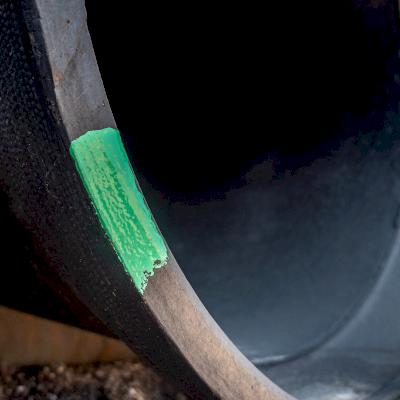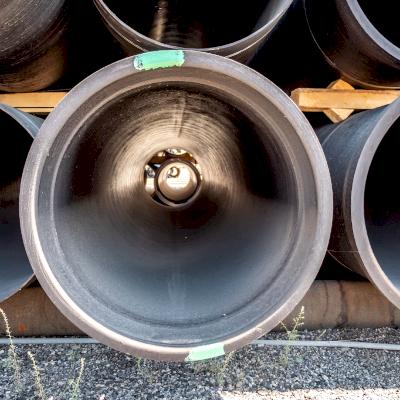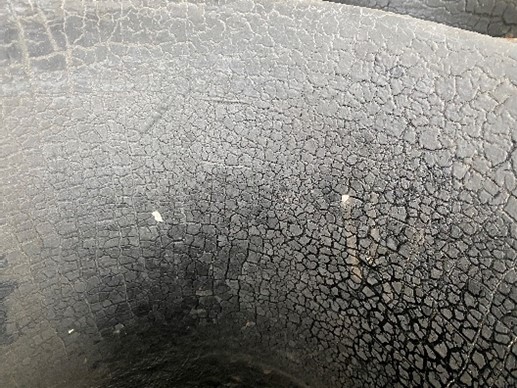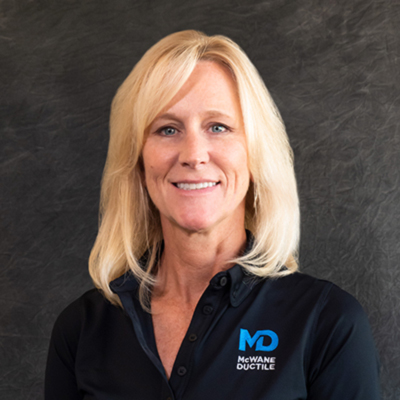As a manufacturer of Ductile iron pipe (DI pipe), we often field questions from water professionals regarding DI pipe, its uses, and how to install it properly. We even receive numerous questions about alternate materials, their differences, their uses, and the best choice for the application. And of course, when you ask, we answer…honestly, even when the answer doesn’t include Ductile iron. In this Iron Strong Blog, we’ll cover a few of our frequently asked questions (FAQ) and provide some solutions. We will continue with this FAQ series in the upcoming months.
What is the difference between Pressure Class and Thickness Class Ductile iron pipe?
When Ductile iron pipe was introduced to the market in 1965, replacing cast or gray iron, pipe manufacturers agreed that there should be a standardized protocol for determining wall thickness. This standard included considerations to the inherent strength advantage of DI over its cast-iron predecessor. With assistance from the Ductile Iron Pipe Research Association (DIPRA), the pipe manufacturers began working towards an agreeable set of standards.
While both Pressure Class and Thickness Class refer to a specific metal wall thickness of the barrel of the pipe, the primary difference is a change in terminology in how Ductile iron is classified under the specifications. Pressure Class designations refer to the pipe's ability to hold pressure, whereas Thickness Class refers only to wall thickness. These designations allow the end-user to specify a pipe that meets the design requirements of a given pipeline.
Need more explanation on this topic? Check out this Iron Strong Blog with a video, What’s the Difference Between Pressure Class and Thickness Class, where Jeremy Gwin helps clear the confusion between the two terms and shows which iron pipe Class you should install on your next DI project.
What is gauged pipe?
During the manufacturing process at McWane Ductile, all pipes are inspected to ensure the spigot end, bell, and socket comply with the requirements of AWWA C151/A21.51. Gauged pipe is pipe that has been checked physically to ensure the entire length, to within two feet of the bell, falls below the maximum Outside Diameter (OD). This allows for easier installation of fittings on this pipe.
Gauged pipe is indicated with a green paint mark on the bell of the pipe to visually show that our quality assurance inspectors have determined these pipes are best suited for field cuts based on both the OD measurements of the pipe as well as pipe ovality. These marks are typically indicated on sizes 14-inch pipe and above.
Whenever possible, use a 14-inch diameter or larger pipe marked as gauged full length (GFL). We typically send 10 percent of an order with large diameter pipe as GFL. Sort this pipe after unloading and reserve for field cutting when needed. We recommended that all pipe be checked in the field with an OD tape prior to cutting.
Want some more Pro tricks and handy tip sheets? See these helpful Iron Strong Blogs:
- How to Cut Ductile Iron Pipe to Length by Jason Barnes.
- How to Use an OD Tape on Ductile Iron Pipe by Aaron Loosli
- Ductile Iron Pipe Markings: What Do They Mean? By Jeff Houser
- Why Is it Important to Know the OD/ID of Ductile Iron Pipe? By Dustin Henderson
Are all Ductile iron pipe push-on joint gaskets interchangeable?
Perhaps a better way to address this question would be to ask what brand or manufacturer of pipe are you using? This answer will determine the joint type that has been supplied.
There are two domestically manufactured push-on joint types; 1.) The Tyton Joint® as manufactured by McWane Ductile and US Pipe and 2.) the Fastite® joint as manufactured by American Cast Iron Pipe Company (American). Therefore, push-on pipe that McWane Ductile or US Pipe manufactures are interchangeable, but neither is interchangeable with pipe manufactured by American.
Bottom Line: You should use gaskets provided by the manufacturer.
Watch a video about the differences in Tyton and Fastite gaskets and read more details in this Iron Strong Blog by Jeremy Gwin: Three Common Questions About Ductile Iron Pipe Gaskets.
Here are a few more blogs with helpful hints and handy tip sheets regarding DI pipe gaskets:
- Proper Gasket Storage and Care by Josh Baker
- Specialty Gaskets: What Are They and When Do We Use Them? By Kevin Christian
- How to Avoid a Displaced or Rolled Gasket by Jason Barnes
Is it normal to see small cracks in the cement lining of Ductile iron pipe?
Yes. These cracks (sometimes resembling a spider web) are caused by iron and cement having different thermal expansion coefficients. As the temperature changes prior to installation, these cracks can occur. These cracks are normal and are of little concern due to a process called autogenous healing.
Simply stated, autogenous healing is the ability of the cement to heal itself. In the presence of moisture, cement extrudes calcium hydroxide, which, upon exposure to the atmosphere, is converted to calcium carbonate, sealing the crack. These calcium carbonate crystals are formed when the carbon dioxide in the air and water carbonates the free calcium oxide in the cement and the calcium hydroxide liberated by the hydration of the tricalcium silicate of the cement.
See this Iron Strong Blog where Gary Gula details the process of autogenous healing and explains why tiny cracks are not a concern in DI pipe: What is Autogenous Healing of Ductile Iron Pipe? Are Small Cracks and Cobwebbing Acceptable?
How do you repair cement lining in Ductile iron pipe?
Since cement-mortar lining’s introduction in 1922, today's modern DI pipe still utilizes cement lining for a safe and reliable means of providing clean drinking water to millions of people every day.
The cement lining, although very durable, does not have the same resistance to bending stress or impact as the pipe itself. On occasion, the cement lining may incur some damage in the field. You can repair cement-mortar lining by following the instructions in ANSI/AWWA C104/A21.4 Cement-Mortar Lining for Ductile-Iron Pipe and Fittings for Water.
There are a few steps to follow to repair, such as preparing your tools and materials, removing the damaged lining, applying a repair patch to create a new smooth surface, and finishing the procedure successfully.
But rather than try to explain here, let’s take you to a more detailed Iron Strong Blog by Jeff Houser with an instructional video and helpful downloadable tip sheet: What to do When the Cement Lining in Ductile Iron Pipe is Damaged.
When is polyethylene encasement required on a Ductile iron pipeline project?
Ductile iron pipe is one of the most widely used pipe materials in North America. The Design Life is second to no other pipe material due to its robust design. In most soils, DI needs no additional corrosion protection. However, polyethylene encasement should be used when the soils on the project are determined to be corrosive to DI pipe.
So how do you know when the soils are corrosive? When do you incorporate the polywrap? The answer lies in the Design Decision Model (DDM®). Developed by DIPRA and Corrpro Companies in 2003, this tool is a two-dimension risk-based model for corrosion control for DI pipelines.
In addition, McWane Ductile has NACE-certified corrosion control experts on hand to answer your DI pipe protection questions. Just contact us. We’ll even come to your job site to assist with pre-installation training.
Want more detail on polyethylene encasement and its application? Check out these Iron Strong Blogs:
- Why Use V-Bio® Polyethylene Instead of Standard Polyethylene Tubing? By Jerry Regula
- Eight Steps for Installing V-Bio Polywrap by Aaron Loosli
- V-Bio or Cathodic Protection – An Honest Comparison by John Simpson
Look for More FAQs and Answers to Come
So, in this blog, we’ve covered just a few of our frequently asked questions in hopes that you, as a water professional, can benefit from the answers your peers have requested. Do you have a question for us? Drop us a quick note at Marketing@McWaneDuctile.com, and we’d be happy to provide a solution. Your question may even end up as the next major topic for our Iron Strong Blog and video series.












